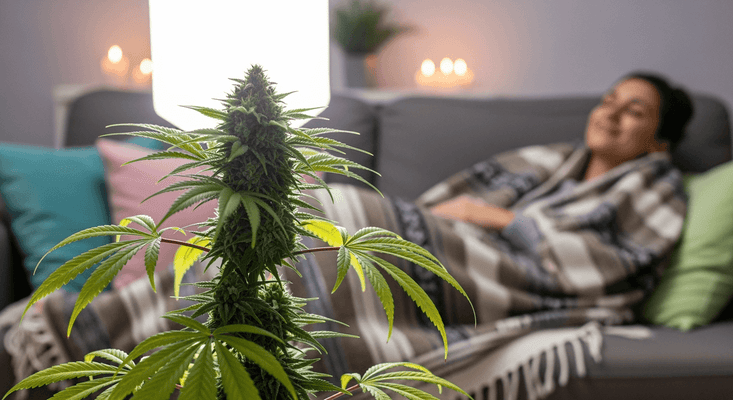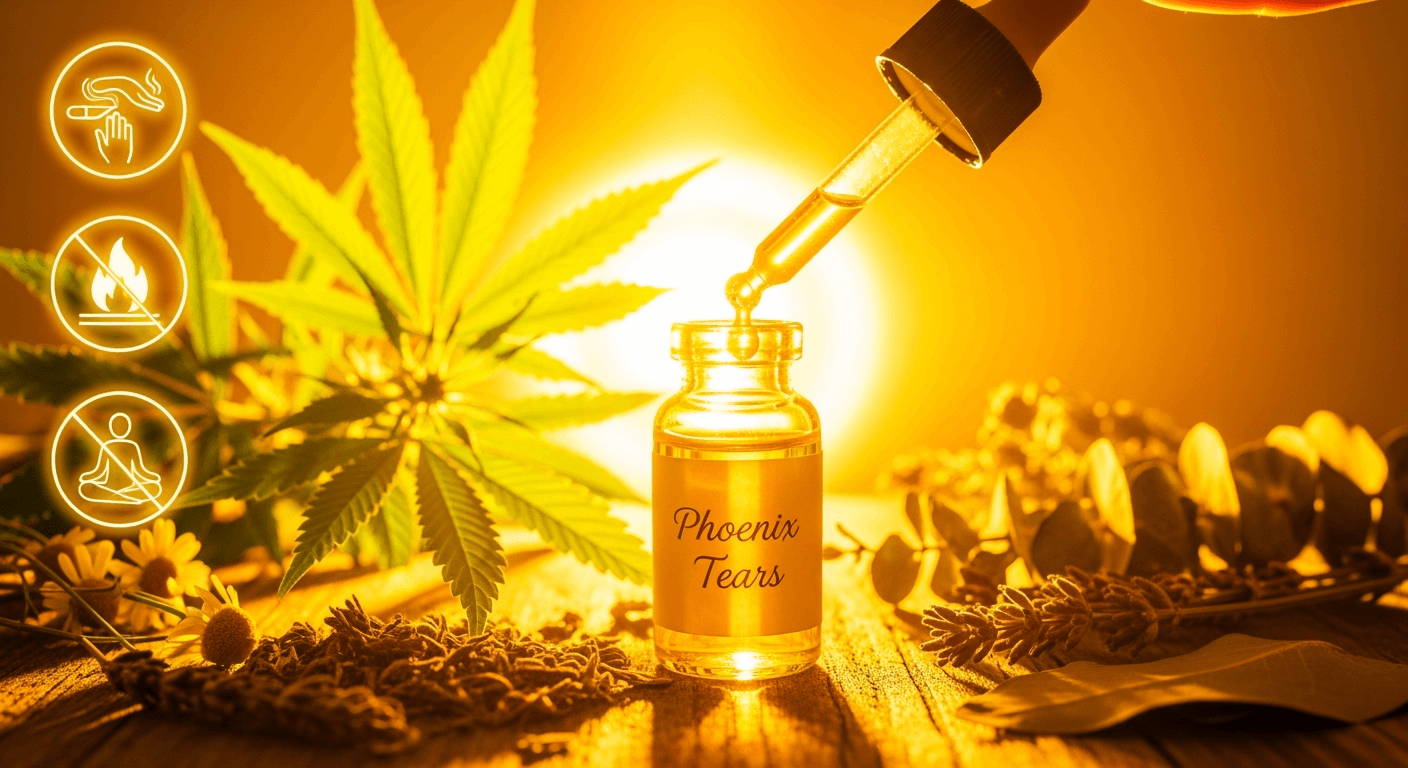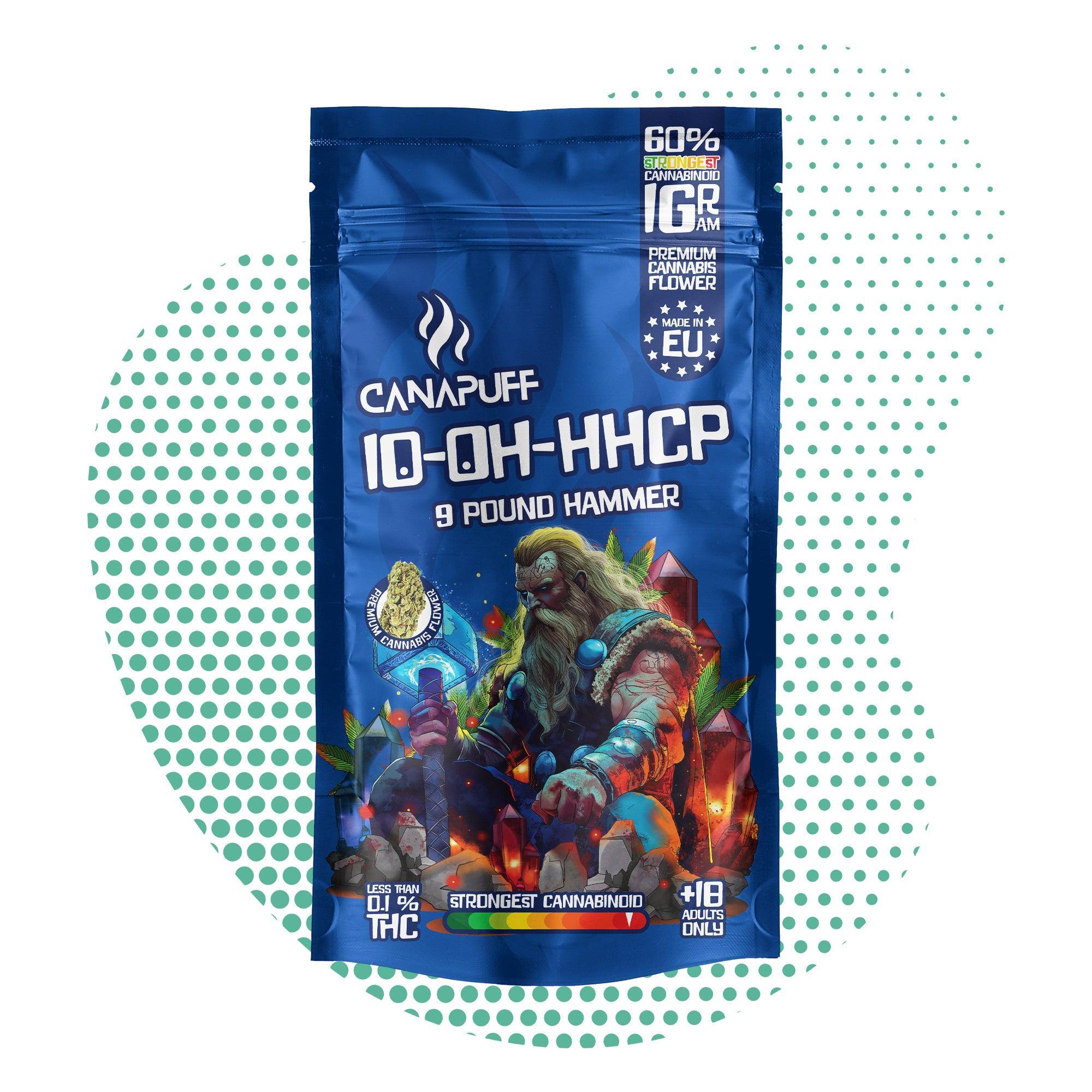Tartalomjegyzék
- What is Indica?
- What Does Indica Do to You?
- What's the Difference Between Indica and Sativa?
- What is Stronger Sativa or Indica?
- Does Indica Make You Sleepy?
- Does Sativa or Indica Make You Sleepy?
- Does Indica Make You Tired?
- Is Indica a Downer?
- Does Indica Lower Heart Rate?
- Is Indica or Sativa Better for Anxiety?
- Is Strawberry Cough Indica or Sativa?
- Is Pineapple Express Indica or Sativa?
- What's the Difference Between Hybrid and Indica?
- Is Indica a Body High?
- Conclusion
Have you ever wondered about the true nature of Cannabis indica? Perhaps you've heard whispers of its relaxing embrace, or maybe you're curious about its differences from its counterpart, Cannabis sativa. For centuries, Cannabis indica has been a cornerstone of traditional medicine and recreational use, evolving in the harsh, high-altitude regions of the Hindu Kush and Himalayas. Its unique characteristics, from its compact stature to its rich resin production, have shaped its journey from ancient landraces to the sophisticated cultivars we know today.
As someone deeply immersed in the world of cannabis, I've witnessed firsthand the profound impact Cannabis indica can have. From helping unwind after a long day to providing a comforting sense of calm, its effects are often distinct and deeply appreciated. In this comprehensive guide, we'll dive deep into what Cannabis indica truly is, what it does to you, how it differs from sativa and hybrids, and address some of the most common questions surrounding this fascinating plant. Get ready to peel back the layers of myth and discover the science behind the "indica experience."
What is Indica?
Cannabis indica is a fascinating ecotype of the cannabis plant, first scientifically described by French naturalist Jean-Baptiste Lamarck in 1785 from specimens found in India. Unlike its taller, more airy sativa relatives, indica is characterized by its short, bushy stature and broad, dark green leaves. This compact architecture is a direct result of its natural origin in the rugged, high-altitude environments of the Hindu Kush, Pamir, and western Himalayan ranges, spanning Afghanistan, Pakistan, northern India, and Nepal.
Centuries of human selection in these regions focused on traits that thrived in such challenging conditions: rapid maturation before mountain frosts, a compact and wind-resistant build, and, crucially, copious, trichome-rich resin production. This resin, which protects the plant's reproductive tissues from harsh UV radiation and desiccation, is also where the plant's potent cannabinoids and aromatic terpenes are concentrated. This historical selection for resin made indica landraces the preferred raw material for traditional hand-rubbed charas and sieved hashish, traded extensively along the ancient Silk Road.
While modern taxonomy sometimes debates whether C. indica is a distinct species or a subspecies of C. sativa, genomic surveys reveal a highly polymorphic species with geographically structured ecotypes that only loosely align with the traditional "indica" and "sativa" labels. However, for growers, clinicians, and consumers, the concept of C. indica remains a valuable agronomic and pharmacological shorthand, representing a plant type known for specific growth habits and effects.
What Does Indica Do to You?
The effects of Cannabis indica are often described as "relaxing," "analgesic," and "sleep-promoting." These traditional user reports are increasingly supported by systematic reviews and observational studies, painting a clearer picture of how indica-dominant strains interact with the human body.
One of the most commonly reported benefits is in pain and inflammation management. THC-dominant indica extracts have shown promise in reducing neuropathic and musculoskeletal pain in clinical cohorts. For instance, after a particularly strenuous hike, I once found myself with nagging knee pain. A small dose of an indica-dominant edible provided a noticeable easing of discomfort, allowing me to finally relax and recover.
Sleep is another area where indica shines. Balanced 1:1 CBD:THC or THC-rich indica oils have been observed to shorten sleep onset and prolong slow-wave sleep in trials involving individuals with insomnia. This is why many people, myself included, often turn to indica strains in the evening to help wind down and prepare for a restful night.
Regarding anxiety and stress, low-THC, myrcene-rich chemovars (a term we'll explore later) can help blunt autonomic arousal, contributing to a sense of calm. However, it's important to note that high THC levels can sometimes aggravate anxiety in certain users, highlighting the importance of understanding individual tolerance and strain profiles.
These diverse outcomes are often attributed to the "entourage effect," a hypothesis suggesting that the combined action of cannabinoids (like THC and CBD) and terpenes (aromatic compounds) produces a synergistic effect greater than that of individual compounds. Indica-leaning terpene signatures typically feature elevated levels of β-myrcene, guaiol, β-eudesmol, and α-bisabolol, which are correlated with earthy, musky aromas and the characteristic sedative "body" effects.
What's the Difference Between Indica and Sativa?
The traditional dichotomy between indica and sativa has long been a guiding principle for cannabis consumers, growers, and even some clinicians. While genomic studies are increasingly blurring these lines, the practical differences in morphology, growth habits, and perceived effects remain relevant.
Here's a breakdown of the key distinctions often attributed to Cannabis indica and Cannabis sativa:
|
Characteristic |
C. indica |
C. sativa |
Agronomic Consequencesativa: |
|
Characteristic |
C. ind |
Agronomic C |
|
|
----- |
----- |
----- |
|
|
Plant stature |
0.6-2 m, conical |
2-4 m, airy |
Indica suits indoor roigh-density fields |
|
Leafl |
7-9, broad, dark green |
9-13, narroght green |
More chlorophycelerateetative growth |
|
Internode spacing |
Short |
Long |
Higher flower-to-stem ratioa |
|
Flowering time |
photoperiod; 7-9 wk average |
65-90 d; some >12 wk |
Faster crop cycles and cooler-climate v |
|
Typical yield |
450- per m2 under 600 µmol PPFD |
Lower density per m2 |
Higher harvest index in indica |
Beyond these physical differences, the chemical profiles, particularly the terpene signatures, also tend to vary. As mentioned, indica-leaning plants are often rich in β-myrcene, which is associated with sedative effects. In contrast, sat limonene.rs more frequently feature terpinolene, α-pinene, and limonene. These terpenes contribute to the more uplifting, energetic, and cerebral effects typically associated with sativa strains.
What is Stronger Sativa or Indica?
The question of whether sativa or indica is "stronger" is a common one, but it's also a bit of a misconception. The strength of a cannabis strain is primarily determined by its cannabinoid content, particularly THC (tetrahydrocannabinol), rather than its indica or sativa classification.
Historically, indica strains were often associated with higher THC levels due to centuries of selection for resin production in their native regions. Early chemotaxonomists observed that Hindu Kush accessions, which are indica in origin, typically had high total cannabinoid (THC + CBD) levels and a CBD:THC ratio of ≤1. This led to the perception that indica was inherently stronger.
However, modern cannabis breeding has led to extensive hybridization, and it's now common to find high-THC strains across the spectrum, regardless of their dominant indica or sativa lineage. Instead of relying on the indica/sativa label for strength, it's more accurate to look at the "chemotype" of a strain, which refers to its specific chemical profile, particularly its cannabinoid and terpene ratios.
Modern notation divides varieties into:
Chemotype I: THC-dominant (common in drug indicas)
Chemotype II: Balanced THC/CBD (found in some "Kush" crosses and hybrids)
Chemotype III: CBD-dominant (typically hemp-derived)
Therefore, a Chemotype I strain, whether it leans indica or sativa in its genetics, will generally be considered "stronger" in terms of psychoactive effects due to its higher THC content. Always check the lab results or product descriptions for cannabinoid percentages to determine a strain's potency.
Does Indica Make You Sleepy?
Yes, indica strains are widely known for their sleep-promoting effects, and this reputation is backed by both anecdotal evidence and scientific observations. As mentioned earlier, traditional user reports consistently describe indicas as "sleep-promoting."
From a pharmacological perspective, balanced 1:1 CBD:THC or THC-rich indica oils have been shown to shorten the time it takes to fall asleep (sleep onset) and prolong slow-wave sleep in clinical trials involving individuals with insomnia. This makes indica a popular choice for those struggling with sleep disturbances.
The sedative qualities of indica are often attributed to its unique terpene profile. Specifically, elevated levels of β-myrcene, a terpene found abundantly in many indica strains, are correlated with these sedative "body" effects. Myrcene is also found in hops, mangoes, and lemongrass, and is often associated with a "couch-lock" sensation, where users feel heavy and relaxed, making it difficult to move.
My personal experience aligns perfectly with this. After a particularly stressful week, I often find it challenging to quiet my mind enough to fall asleep. A small amount of an indica-dominant strain, particularly one high in myrcene, helps me transition from a state of mental agitation to a calm, relaxed state, paving the way for a deep and restorative sleep. It's a noticeable difference compared to more stimulating strains.
Does Sativa or Indica Make You Sleepy?
When it comes to inducing sleepiness, indica strains are generally the clear winner. While some individuals might find that any cannabis consumption can lead to relaxation and eventually sleep, the specific chemical profiles of indica and sativa lend themselves to different primary effects.
Indica: As discussed, indica strains are renowned for their sedative properties. Their higher concentrations of terpenes like myrcene contribute to a "body high" that promotes relaxation, muscle relief, and often, drowsiness. If your goal is to unwind, alleviate physical tension, and prepare for sleep, indica is typically the preferred choice.
Sativa: In contrast, sativa strains are more often associated with uplifting, energizing, and cerebral effects. Their terpene profiles, rich in compounds like terpinolene, α-pinene, and limonene, tend to promote focus, creativity, and alertness. Consuming a sativa strain, especially in larger quantities or later in the day, is more likely to leave you feeling stimulated rather than sleepy, potentially even interfering with sleep for some individuals.
Of course, individual responses can vary greatly due to personal biochemistry, tolerance, and the specific chemotype of the strain. However, as a general rule of thumb, if sleep is your primary objective, indica is the strain type to lean towards.
Does Indica Make You Tired?
Yes, indica strains can definitely make you feel tired, especially in higher doses or if you are sensitive to their effects. This tired or heavy feeling is often referred to as "couch-lock," where you feel a strong desire to sit or lie down and relax, with little motivation for physical activity.
This effect is closely linked to the sedative properties of indica strains, primarily driven by their terpene profiles, particularly the presence of β-myrcene. Myrcene is known for its muscle-relaxant and sedative qualities, which contribute to the overall feeling of physical relaxation and lethargy.
While this "tiredness" can be highly beneficial for those seeking relief from insomnia, chronic pain, or anxiety, it's something to be mindful of if you need to remain alert and productive. For this reason, many users prefer to consume indica strains in the evening or during times when they don't have pressing responsibilities.
Is Indica a Downer?
The term "downer" can carry negative connotations, but if interpreted as something that promotes relaxation, sedation, and a calming effect, then in that sense, indica can be considered a "downer." It's not a downer in the sense of causing depression or negative mood shifts, but rather in its ability to slow down the body and mind.
Indica strains are prized for their ability to:
Relax muscles: Alleviating physical tension and discomfort.
Calm the mind: Reducing racing thoughts and promoting mental tranquility.
Induce sleepiness: Helping individuals fall asleep and stay asleep.
Reduce anxiety: Lowering autonomic arousal in some cases, leading to a sense of peace.
These effects are often sought after for medicinal purposes, such as managing chronic pain, insomnia, muscle spasms, and anxiety. So, while it does "bring you down" from a state of alertness or tension, it does so in a way that is generally considered beneficial for relaxation and well-being. It's about shifting your state from active to restful.
Does Indica Lower Heart Rate?
While indica strains are well-known for their relaxing and sedative effects, the provided research document does not explicitly detail whether indica directly lowers heart rate. Cannabis, in general, can have varied effects on cardiovascular function depending on the individual, the dose, and the specific cannabinoid and terpene profile.
Some studies suggest that THC, particularly in higher doses, can initially cause a temporary increase in heart rate due to its vasodilatory effects and the body's compensatory mechanisms. However, the overall relaxing effect of indica strains, especially those with significant CBD content or specific terpenes, might indirectly lead to a perceived calming of the cardiovascular system as the body enters a more relaxed state.
It's important to consult with a healthcare professional if you have pre-existing heart conditions or concerns about cannabis's effects on your cardiovascular health. The primary effects of indica as documented are relaxation, pain relief, and sleep promotion, rather than a direct impact on heart rate.
Is Indica or Sativa Better for Anxiety?
The question of whether indica or sativa is better for anxiety is nuanced, as individual responses to cannabis can vary significantly. However, based on common user experiences and some research, indica strains are often preferred for managing anxiety due to their calming and sedative properties.
Indica-dominant strains, especially those with lower THC and higher CBD or specific terpenes like myrcene, can help blunt autonomic arousal and promote a sense of tranquility. The "body high" associated with indica can help ground individuals, reducing the racing thoughts and physical tension often accompanying anxiety. For me, when anxiety starts to manifest as restlessness and an inability to focus, an indica strain can be incredibly helpful in bringing me back to a state of calm.
On the other hand, sativa strains, particularly those high in THC, can sometimes exacerbate anxiety in susceptible individuals. Their stimulating and cerebral effects can, for some, lead to heightened paranoia or an overthinking spiral. While some sativa strains with specific terpene profiles (like limonene, which is often associated with mood elevation) might be beneficial for certain types of anxiety or depression, it's generally recommended to approach them with caution if anxiety is a primary concern.
Ultimately, the "best" strain for anxiety depends on the individual's unique endocannabinoid system, the specific type of anxiety they experience, and the strain's precise chemotype. Starting with low doses, especially with new strains, and paying attention to how your body reacts is always advisable.
Is Strawberry Cough Indica or Sativa?
Strawberry Cough is widely recognized as a sativa-dominant hybrid. It's famous for its sweet, strawberry-like aroma and flavor, along with its ability to induce an uplifting, energetic, and cerebral high. Users often report feeling happy, focused, and creative after consuming Strawberry Cough, making it a popular choice for daytime use or social activities.
While it exhibits strong sativa characteristics in its effects, it's important to remember that most strains available today are hybrids to some degree, meaning they contain genetic contributions from both indica and sativa lineages. The "sativa-dominant" label indicates that its effects and growth patterns lean more towards the sativa side of the spectrum.
Is Pineapple Express Indica or Sativa?
Pineapple Express is a well-known hybrid strain. It gained significant popularity after the movie of the same name and is cherished for its balanced effects, offering a blend of both sativa and indica characteristics.
Typically, Pineapple Express is described as providing an energetic and uplifting head high, characteristic of a sativa, combined with a pleasant, relaxing body buzz often associated with an indica. This makes it a versatile strain, suitable for various times of the day and different activities. Its aroma is often described as tropical, sweet, and piney, thanks to its rich terpene profile.
As with Strawberry Cough, the "hybrid" designation reflects its mixed genetic heritage, aiming to deliver a more nuanced and comprehensive experience that draws from the best of both worlds.
What's the Difference Between Hybrid and Indica?
Understanding the difference between a "hybrid" and an "indica" is crucial in navigating the modern cannabis landscape.
Indica: As we've discussed, "indica" refers to a specific ecotype of Cannabis plant, historically characterized by its short, bushy growth, broad leaves, faster flowering times, and a chemical profile often rich in myrcene, leading to relaxing, sedative, and "body high" effects. These are the foundational genetics that breeders work with.
Hybrid: A "hybrid" cannabis strain is the result of cross-breeding two or more different cannabis strains. In most cases, this means crossing an indica strain with a sativa strain, or even crossing two different hybrids. The goal of hybridization is to combine desirable traits from different parent strains, whether those are specific cannabinoid ratios, terpene profiles, growth characteristics, or a blend of effects.
Think of it like this: Indica is a fundamental category based on the plant's natural evolution and morphology. A "hybrid" is a human-created blend that leverages these fundamental categories. Most strains available on the market today are, in fact, hybrids, even if they are labeled "indica-dominant" or "sativa-dominant." These labels simply indicate which parent's traits are more prominent in the resulting hybrid.
For example, an "indica-dominant hybrid" might have the relaxing body effects of an indica but with a slightly more uplifting mental clarity from its sativa lineage. This allows for a much wider range of experiences and tailored effects, moving beyond the rigid indica/sativa binary.
Is Indica a Body High?
Absolutely. The concept of a "body high" is perhaps one of the most defining characteristics of Cannabis indica strains. This term refers to the physical sensations of relaxation, heaviness, and often, pain relief that users experience throughout their body.
Unlike the more cerebral and stimulating effects often associated with sativa strains, an indica "body high" typically manifests as:
Muscle relaxation: A noticeable easing of tension in the muscles, which can be very beneficial for those with muscle spasms or soreness.
Sedation: A feeling of physical calm that can lead to drowsiness or "couch-lock."
Pain relief: A reduction in physical discomfort, often described as a soothing sensation.
Warmth or tingling: Some users report a pleasant warmth or tingling sensation spreading through their limbs.
This "body high" is largely attributed to the unique combination of cannabinoids and terpenes found in indica strains. As previously discussed, terpenes like β-myrcene, guaiol, and α-bisabolol are prevalent in indica and are thought to contribute significantly to these physical effects. Myrcene, in particular, is believed to enhance the permeability of cell membranes, potentially allowing cannabinoids to cross the blood-brain barrier more efficiently and exert their effects more profoundly on the body.
For many, the indica "body high" is precisely what they seek for evening relaxation, pain management, or a good night's sleep. It's a profound sense of physical ease that can melt away the day's stresses.
Conclusion
From its ancient origins in the towering Hindu Kush mountains to its prominent role in today's diverse cannabis market, Cannabis indica has carved out a distinct and cherished identity. While the scientific community increasingly favors chemovar and genomic classifications over the traditional indica-sativa dichotomy, the "indica concept" remains incredibly valuable. It serves as a practical shorthand for cultivators seeking compact, fast-flowering plants and for consumers and clinicians desiring reliable relaxation, pain relief, and sleep-promoting effects.
We've explored how indica's unique morphology and chemical profile, particularly its rich terpene signature with compounds like β-myrcene, contribute to its characteristic "body high" and sedative qualities. We've also clarified that "strength" is more about cannabinoid content than the indica or sativa label, and that most strains you encounter today are, in fact, hybrids blending the best of both worlds.
Whether you're a seasoned enthusiast or new to the world of cannabis, understanding Cannabis indica empowers you to make more informed choices. Remember, individual experiences can vary, so listening to your body and starting with low doses is always key.
Ready to explore the world of Cannabis indica for yourself? Consult with a knowledgeable dispensary or healthcare professional to find the right chemovar that aligns with your wellness goals. Dive deeper into strain-specific research and discover the profound relaxation that Cannabis indica can offer.














Hozzászólás
Ezt a webhelyet a hCaptcha rendszer védi, és a hCaptcha adatvédelmi szabályzata, valamint szolgáltatási feltételei vonatkoznak rá.